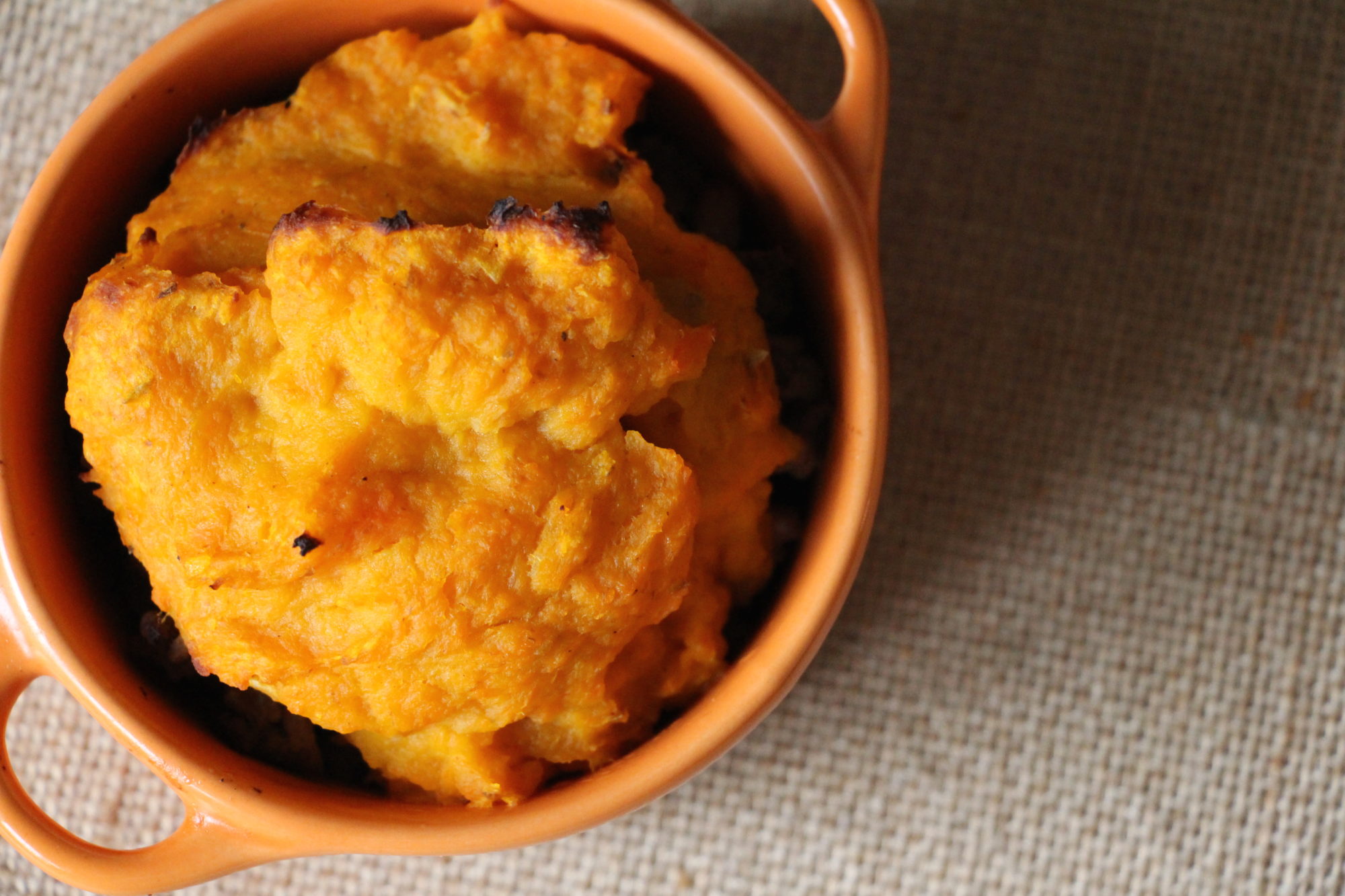It’s kind of strange how many cultures have invented the same dish independently of one another.
While for years Marco Polo got the credit for having brought pasta to Italy from China, the truth is that it’s far more likely that pasta was invented by the Chinese but also by the Italians, the Germans (spaetzle) and the Greeks (orzo) without much outside influence. The same is true for other staples, like bread, crêpes, and dumplings, which exist in many different cuisines the world over. And as I discovered when I first moved to France, shepherd’s pie is yet another (very specific) member of this category.
In the UK (and consequently in the US, to some extent), shepherd’s pie is a dish of mince with gravy topped with mashed potatoes and baked. Technically speaking, a shepherd’s pie should actually be made with lamb, while a cottage pie is made with beef, but today, shepherd’s pie is used to refer to both dishes (as well as to veggie versions).
In France, however, the same concoction is known as a hachis Parmentier, or a Parmentier hash, named for the man who first told French people that it was OK to eat potatoes.
While the potato was first introduced into France in the 17th century, potatoes had been illegal to cultivate in France since 1748 on the grounds that they were thought to cause leprosy. In reality, the potato was occasionally grown in France even during this period, albeit solely for animal feed.
Parmentier, on the other hand, thought that potatoes could be a good food source for people, and he began testing potatoes, notably as an ingredient for making more cost-efficient bread. He also developed a number of recipes using the potato and served them to prominent Parisians at dinner parties, including a much fancier version of what today has come to be known the hachis Parmentier.
Parmentier’s grave at Père Lachaise is a testament to his legacy, as is this play on a classic hachis, albeit with far less potato than Parmentier probably would have liked me to use.
You see, while I love potatoes as much as the next girl, I also love color on my plate, especially in winter months. And as I’ve previously mentioned, I generally have a surplus of carrots now that Little Sister has moved back to the U.S. This, to me, is the perfect compromise between a heavier Parmentier, the topping of which is usually filled with butter and a bit of cream, and a healthier version perfect for a weeknight dinner.
Carrot Hachis Parmentier/Shepherd’s Pie (serves 4)
800 grams carrots
1 medium potato
1 clove garlic
freshly ground nutmeg
2 tablespoons ghee or grass-fed butter, divided
salt and pepper
100 grams bacon lardons
1 small onion, minced
3 button mushrooms, minced
350 grams ground beef
1 clove black garlic, minced
salt and pepper, to taste
Preheat the oven to 400 degrees.
Cut the carrots and potatoes into large chunks and place in a pot with the unpeeled whole garlic clove. Cover with water and season generously with salt. Cook for about 20 minutes, or until a knife inserted into a piece of carrot goes through easily.
Meanwhile, heat a skillet over medium heat and cook the lardons, allowing them to render their fat and get browned. Remove them and set them aside, leaving the fat in the pan. Add the onions and mushrooms and season with a touch of salt. Sauté until the onions are translucent and the mushrooms have given off some liquid, about 3-5 minutes, and then add the beef. Break it up with a wooden spoon and cook until browned, about 7-10 minutes. Add the minced garlic and season to taste with salt and pepper. Return the lardons to the pan and mix to combine. Set aside.
When the carrot and potato mixture is cooked, drain and mash well, adding 1 tablespoon of the ghee, a pinch of nutmeg, and salt and pepper to taste.
Spread the meat mixture in the bottom of a Pyrex baking dish or individual ramekins, and dollop the mash over the top, spreading it out so that it’s relatively smooth. Dot with the remaining ghee and bake for 10-15 minutes, until the top is slightly browned. Serve warm.


